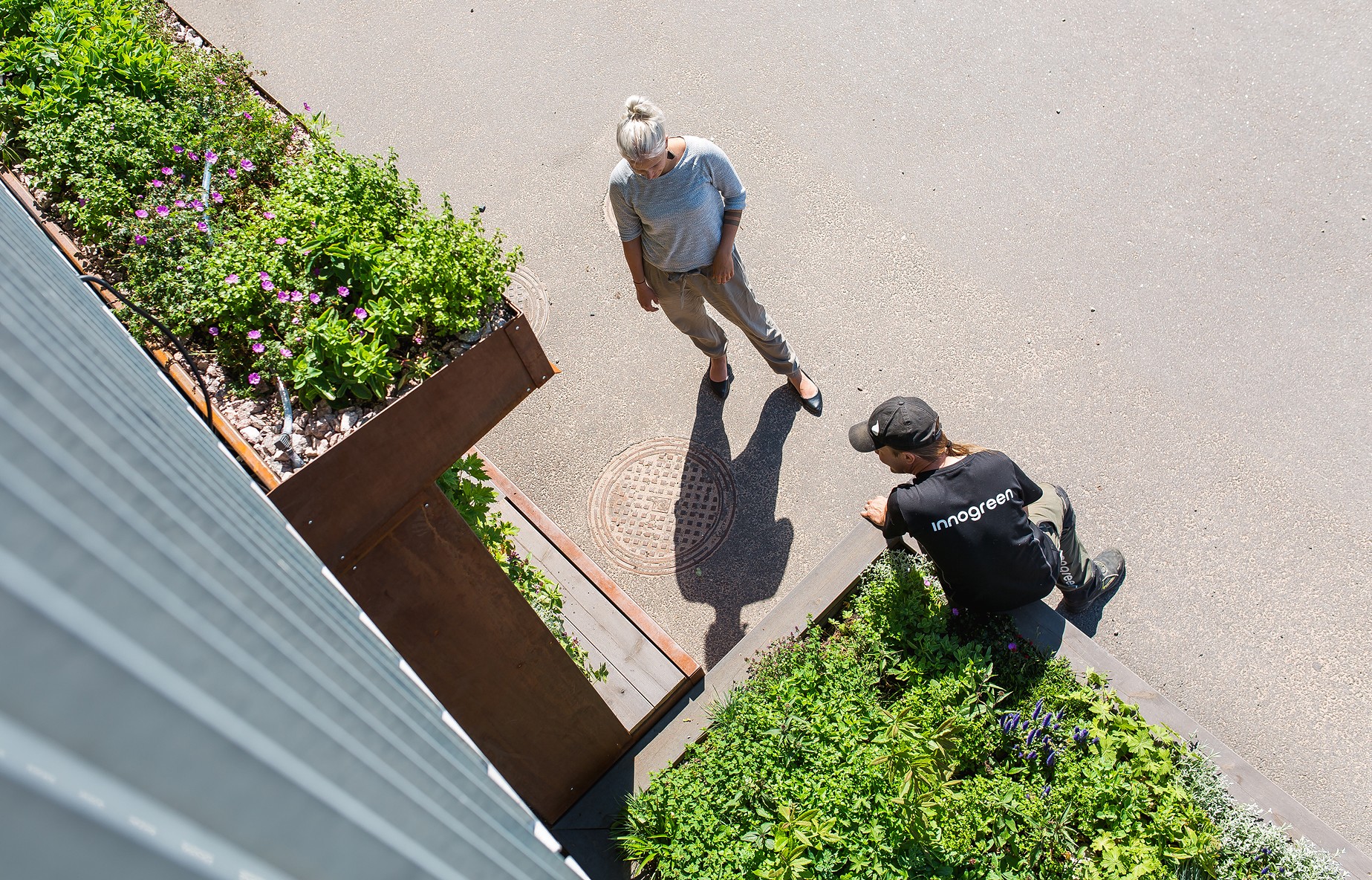Our website uses cookies. We analyze usage statistics collected based on them and they may be used for targeting advertising on other websites.
You can also reject the tracking and use of cookies. More information
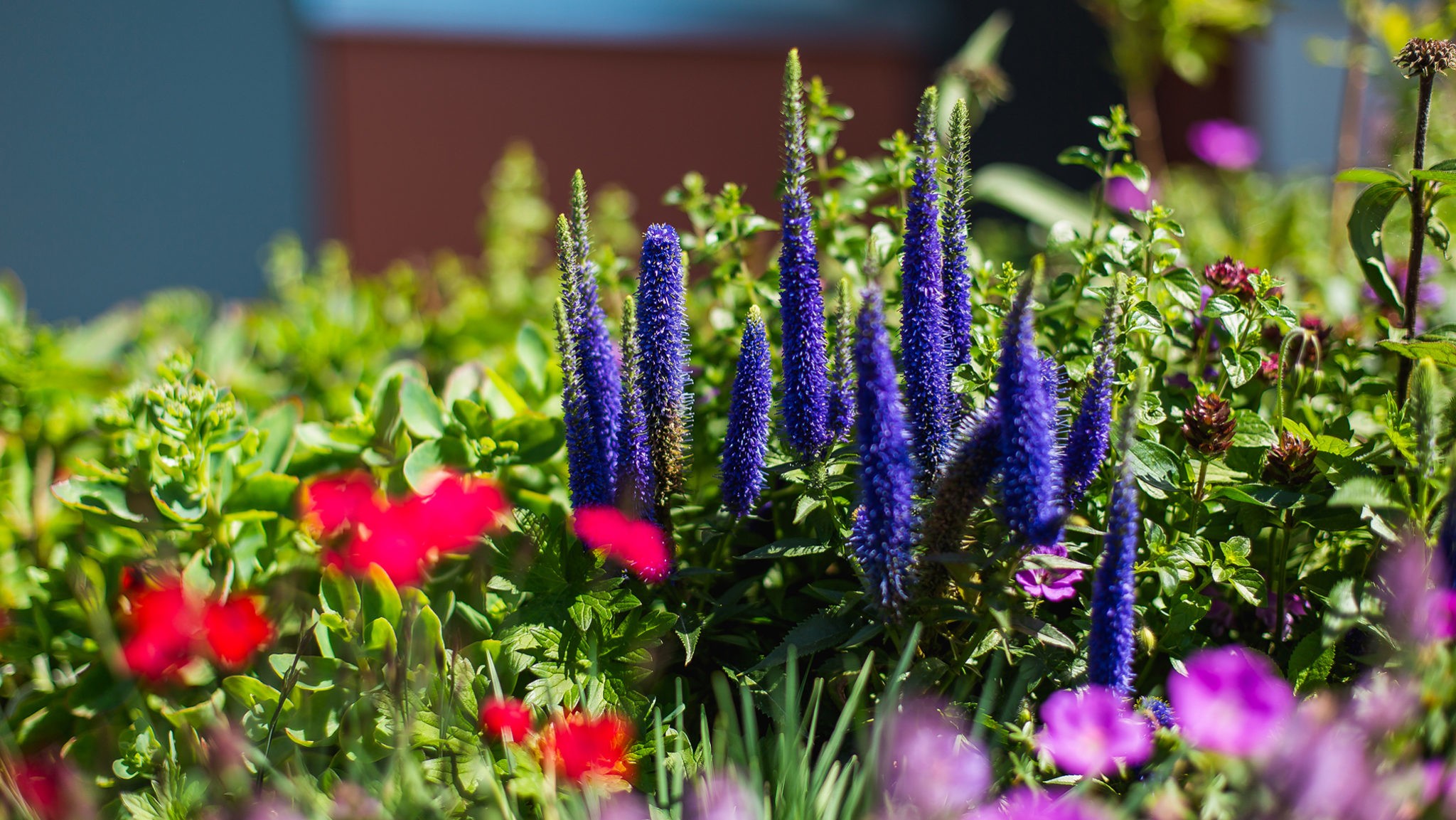
The rain garden built within the framework of the Smart Kalasatama project is now completed and on proud display in the schoolyard of Kalasatama primary school. “We would like residents in the area to feel like this is a rain garden for everyone,” explains gardening wizard Mats Wikström, one of the project leaders.
The rain garden in Kalasatama consists of a green wall and planting boxes. Under the planting boxes there are water tanks that can hold over 1000 litres of water between them. Rainwater gathers in the tanks and flows through the planting boxes in a way that makes it possible for the plants to utilise the water for up to several weeks. “The smallest version of the rain garden can be just a green wall or a planting box. While the biggest version is a solution covering the whole yard,” says our garden expert Mats Wikström. In Kalasatama, it wasn’t possible to build structures on the ground, so plants were planted in boxes. The last part of the rain garden, a green depression, is also missing. “A green depression is basically a hole that creates a small pond during rain. All the excessive urban runoff is absorbed into groundwater through the pond,” explains Mats.
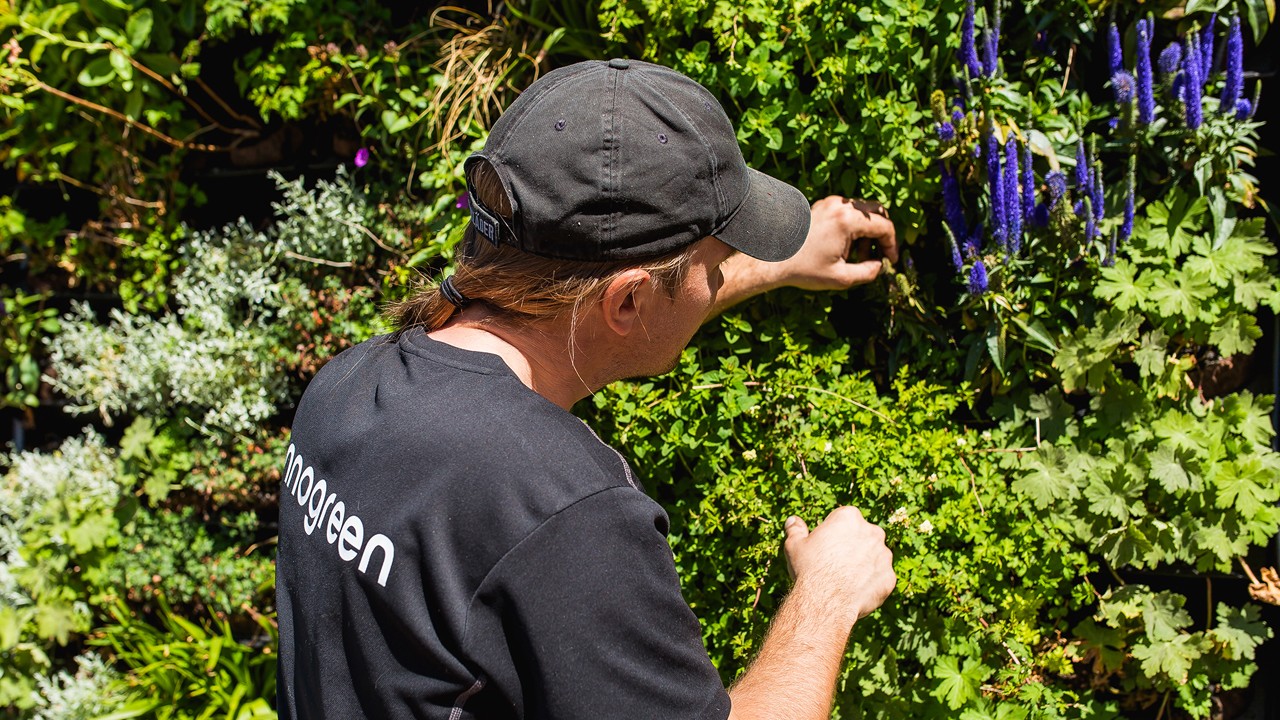
The location of the rain garden directs the choice of plants. The plants chosen to be planted are natural or are minimially bred and can survive in natural conditions as well as possible. Kalasatama primary school’s yard can get very warm during summer, so the type of plants chosen have to be able to thrive in a dry meadow. “The blooming time on the wall is quite short, but it is visible all the time. Which means the plants have to stay green throughout the summer. The box is tightly planted, so it isn’t a particular problem if there are also plants in the box that wither after blooming. There’s also space for some plants to provide spicier scents. And, of course, none of the plants in the garden are toxic,” says Mats.
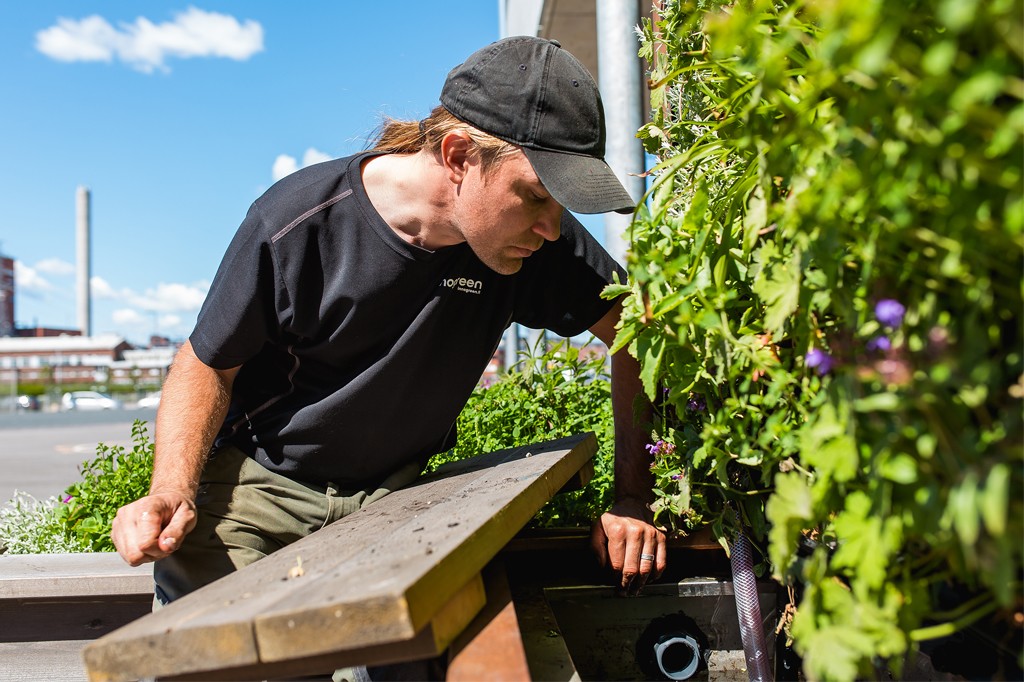
Even though the building process of the rain garden is complete, the project continues. “During the summer we will monitor how the plants flourish, among other things. We’ll also be testing how long it takes for the water tanks to empty completely,” says Mats. When children return to school in August we will co-operate with the school to plan how they can utilise the garden in teaching. “The idea is that the children will take care of checking the amount of water in the system and adding some when needed”, explains Mats. “In late autumn we could plant bulbs together and the children could help with that. We would like residents in the area to feel like this is a rain garden for everyone.”
The feedback from the project has been solely positive. “The children, the teachers and the parents have all been very happy about the project. And why wouldn’t they be? People usually enjoy nature and verdancy,” says Mats with a smile.
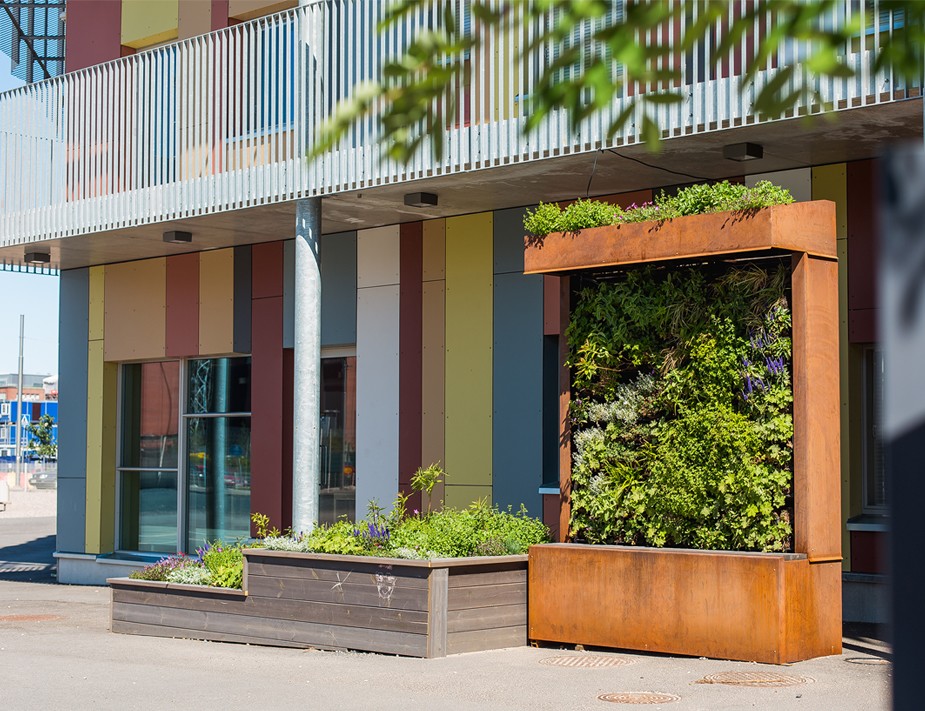
Smart Kalasatama is a project aiming to make Kalasatama in Helsinki a resource-wise neighbourhood. “Resource-wise” means that the area is developed flexibly and through experiments together with residents, corporations, the City of Helsinki, and other actors. The vision is for smart city development innovations to save residents an hour each day.
The rain garden is a part of the Smart Kalasatama project’s agile piloting programme. The programme buys small experiments for the area to make innovative services available to residents. The programme aims to promote cooperative experiments between multiple actors and to stimulate the development of good concepts into service innovations and new business ventures.
Are you interested in the rain garden? Contact us for additional information!
